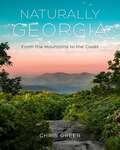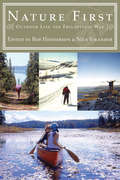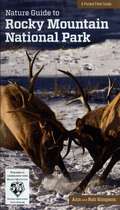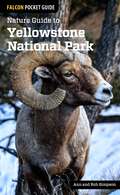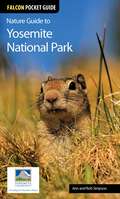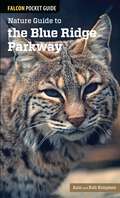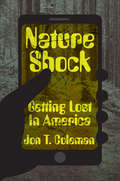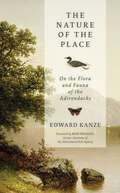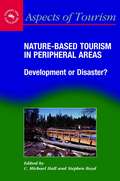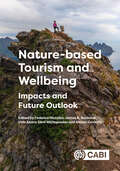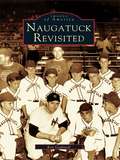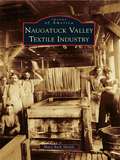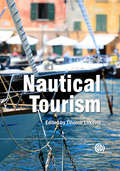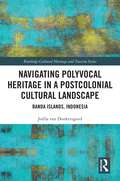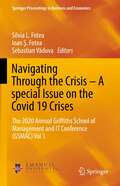- Table View
- List View
Naturally Georgia: From the Mountains to the Coast
by Chris GreerGeorgia is a state of great geographical diversity, and as you make your way from the Atlantic Ocean up to the temperate rainforest of the southern Appalachians, you&’ll find a lot to see. Thousands of meandering creeks twist and turn their way through the coastal marsh, filling and emptying its 400,000 acres twice a day with tides that can average seven feet or even higher. The largest blackwater swamp in North America is just inland, and from there you can trek north through the ever-changing scenery as the landscape transitions from the Coastal Plain to the Piedmont and finally to the Appalachian Mountains. There is plenty of beauty, including rolling farmland, intriguing barns, and stately old trees that have witnessed incredible change since Georgia&’s inception in 1788.It is a place of remarkable beauty that sets a perfect scene for a landscape photographer. The Mountains, the Heartland, the South, and the Coast are gorgeous backdrops where Chris Greer captures the essence of the state in this a showcase of the splendor that is Naturally Georgia.
Nature First: Outdoor Life the Friluftsliv Way
by Bob Henderson Nils VikanderNature First combines the Scandinavian approach to creating a relationship with nature (known as friluftsliv) with efforts by Canadian and international educators to adapt this wisdom and apply it to everyday life experiences in the open air. The word friluftsliv literally refers to "free-air life" or outdoor life. A word saturated with values, the concept can permeate deeply and playfully into ones cultural being and personal psyche, thus influencing the way one perceives and interacts with nature on a daily basis. For centuries, the North American approach has been one of domination and bringing nature under control, in many cases abusing our natural environment in the process. The friluftsliv way of being on "talking terms with nature," developing an "insider’s" relationship with nature, offers the rich potential of allowing us as cohabiters on the Earth to recreate, rejuvenate and restore the balance among all living things. Nature First is the first English-language anthology to bring together the perspectives and experiences of North American, Norwegian, Swedish and other international outdoor writers, all friluftsliv thinkers and doers. Here, the thirty contributors’ use of history, sociology, psychology, philosophy and outdoor education writings blend to provide an understanding of how friluftsliv applies to everyday life. The book presents an alternative to much of the personal growth/adventure-based literature that tends to dominate our current approach to the outdoor activity. Folklore, heritage, adventure travel, crafts, place-based education and the daily outings of families all have a role to play in promoting an understanding of both the ordinary and the mystical importance of this Nordic tradition. Dedicated to parents, travel guides, educators and generally to participants in the outdoors, Nature First provides a compellingly fresh approach to life in the out-of-doors.
Nature Guide to Acadia National Park (Nature Guides to National Parks Series)
by Rob Simpson Ann SimpsonThis field guide dedicated to wildlife of Acadia National Park is an information-packed book that introduces park visitors to animals, plants, insects, and more that reside in the area in a colorful, easy-to-use package. Including full-color photos and easy-to-understand descriptions and with full cooperation from the park association, this book will appeal to anyone interested in nature.
Nature Guide to Glacier and Waterton Lakes National Parks
by Amy GrisakGlacier National Park, known as the "Crown of the Continent," is a stunningly beautiful mountain landscape adorned with glaciers and snowfields. Combined with its sister park, Waterton Lakes Park in southern Alberta, the two become Waterton-Glacier International Peace Park, the first of its kind in the world. These wild places are the realm of the grizzly and the mountain goat, along with the diminutive pika and delicate, yet exceptionally hardy, wildflowers that put on a dazzling display in the short season between the months of snow. Visitors to Glacier and Waterton have a lot of questions about the native flora and fauna, and there isn&’t a ranger around every corner to answer them. Nature Guide to Glacier and Waterton National Parks will be their handy resource to quickly identify over 200 animals and plants native to the parks. Conveniently sized to fit in a pocket, look inside for full-color images, detailed descriptions, useful park information, and much more as you explore the unique wildlife and nature of Glacier and Waterton Lakes National Parks.
Nature Guide to Rocky Mountain National Park (Nature Guides to National Parks Series)
by Rob Simpson Ann SimpsonThis field guide dedicated to the wildlife of Rocky Mountain National Park is an information-packed, pocket-sized book that introduces park visitors to animals, plants, insects and more that reside at Rocky Mountain National Park in a colorful and portable package. Includes more than 200 species, including elk, bighorn sheep, moose, ptrarmigan, pika, American dipper, greenback cutthroat trout, aspen, fairy slipper, Colorado columbine, mountain pine beetle, and more.
Nature Guide to Shenandoah National Park
by Rob Simpson Ann SimpsonThis field guide dedicated to wildlife of Shenandoah National Park is an information-packed book that introduces park visitors to animals, plants, insects and more that reside in the Shenandoah Valley in a colorful, easy-to-use package. Including full-color photos and easy-to-understand descriptions and with full cooperation from the park association, this book will appeal to the 1.1 million visitors who travel to Shenandoah every year.
Nature Guide to Shenandoah National Park (Nature Guides to National Parks Series)
by Rob Simpson Ann SimpsonThis field guide dedicated to wildlife of Shenandoah National Park is an information-packed, pocket-sized book that introduces park visitors to animals, plants, insects and more that reside in the Shenandoah Valley in a colorful and portable package. Including full-color photos and easy-to-understand descriptions and with full cooperation from the park association, this book will appeal to the 1.1 million visitors who travel to Shenandoah every year.
Nature Guide to Yellowstone National Park (Nature Guides to National Parks Series)
by Rob Simpson Ann SimpsonThis field guide dedicated to wildlife of Yellowstone National Park is an information-packed, pocket-sized book that introduces park visitors to the animals, plants, insects and more that reside in Yellowstone National Park in a colorful and portable package. Published in cooperation with Yellowstone National Park Association, this Nature Guide to Yellowstone National Park contains full-color photos and easy-to-understand descriptions. Here is the perfect companion guide for the 3 million visitors who travel to Yellowstone National Park every year.
Nature Guide to Yosemite National Park (Nature Guides to National Parks Series)
by Rob Simpson Ann SimpsonThis field guide dedicated to wildlife of Yosemite National Park is an information-packed, pocket-sized book that introduces park visitors to the animals, plants, insects and more that reside in Yosemite National Park in a colorful and portable package. Published in cooperation with Yosemite National Park Association, this Nature Guide to Yosemite National Park contains full-color photos and easy-to-understand descriptions. Here is the perfect companion guide for the 4 million visitors who travel to Yosemite National Park every year.
Nature Guide to the Blue Ridge Parkway (Falcon Pocket Guides)
by Rob Simpson Ann SimpsonThe stunning wildlife along the Blue Ridge Parkway attracts more than 14 million annual visitors from near and far for viewing and photographing opportunities. This information-packed, pocket-size field guide features more than 200 species of mammals, birds, insects, fish, wildflowers, mushrooms and more in a convenient, portable package. Including full-color photos and easy-to-understand descriptions, species are arranged by family to aid in quick identification. This book also includes ecosystem and geology information about the park as well as suggested nature hikes. This is the perfect nature guide for your next trip to the Blue Ridge Parkway.
Nature Shock: Getting Lost in America
by Jon T. ColemanAn award‑winning environmental historian explores American history through wrenching, tragic, and sometimes humorous stories of getting lost The human species has a propensity for getting lost. The American people, inhabiting a mental landscape shaped by their attempts to plant roots and to break free, are no exception. In this engaging book, environmental historian Jon Coleman bypasses the trailblazers so often described in American history to follow instead the strays and drifters who went missing. From Hernando de Soto&’s failed quest for riches in the American southeast to the recent trend of getting lost as a therapeutic escape from modernity, this book details a unique history of location and movement as well as the confrontations that occur when our physical and mental conceptions of space become disjointed. Whether we get lost in the woods, the plains, or the digital grid, Coleman argues that getting lost allows us to see wilderness anew and connect with generations across five centuries to discover a surprising and edgy American identity.
Nature Swagger: Stories and Visions of Black Joy in the Outdoors
by Rue MappAn exquisite combination of beautiful photography and compelling stories, this book from Outdoor Afro founder, Rue Mapp, celebrates Black joy in nature.Filled with breathtaking photography, inspiring stories, profiles, and spotlights from Outdoor Afro group members, prominent Black leaders in outdoor spaces, and other organizations, this book inspires Black communities to reclaim their place in the natural world. Interspersed throughout are essays from Mapp on the rich history of Black involvement in the outdoors, activism, and conservation, as well as resources for readers who want to deepen their own connection with the elements. A perfect blend of gorgeous photographs, awe-inspiring stories, and Black history, this collection is the perfect gift for anyone looking to heal in these sacred natural spaces.INCREDIBLE ORGANIZATION: Outdoor Afro is a leading organization in the promotion of Black involvement and interaction with the outdoors. Their powerful work is leaving positive, lasting effects on the Black community and broader conservation community.ACCOMPLISHED AUTHOR: Rue Mapp's rich involvement in the outdoors and her connections with like-minded individuals and organizations offer a unique approach to educating, motivating, and encouraging Black connection with nature.INSPIRATIONAL AND UNIQUE: This book showcases Black joy and strength in spaces from which they have either historically been excluded, or less represented, and makes for an inventive and uplifting celebration of Black joy in nature.A GREAT GIFT: Perfect for the outdoorsy person in your life, this book will make for an excellent boost of inspiration and encouragement all year round. Perfect for:Black and brown community members with an interest in natureHikers, campers, birders, and backpackers
Nature Tourism (Contemporary Geographies of Leisure, Tourism and Mobility)
by Joseph S. Chen Nina K. PrebensenIn recent decades, the fast rise of emerging economies, like the BRICS nations, has propelled the growth of tourism worldwide. Meanwhile, a plethora of nature destinations has been developed to meet the diverse needs of the new wave of demand from emerging economies and to entice existing tourists from advanced and rich economies. <P><P>Nature Tourism augments the current literature on the benefits and pitfalls in recent developments of nature tourism, tracing the history in development, highlighting the ecological impacts and showcasing the current practices in nature tourism, along with discussions on specific tourist markets from holistic viewpoints embracing lessons learned from various destination nations and continents across the globe. A host of topics with global significance will be explored such as the effect of climate change on nature tourism, technological innovation in managing nature tourism, visitor management in nature tourism and market positioning in a highly competitive environment. These are reviewed in a wide range of countries from USA/Canada, South America, Scandinavian countries, the Swiss Alps, Middle-East countries, Africa, China and Australia/New Zealand. <P><P>This book will offer significant insight into nature-based tourism and its future development. It will be of interest to upper-level students, researchers and academics in tourism, environmental studies, development and sustainability.
Nature of the Place: On the Flora and Fauna of the Adirondacks
by Edward KanzeA love letter to the Adirondacks, revealing the hidden wonders and interconnected lives of its wildlife by one of the region&’s most prolific and prominent residents.The Nature of the Place is storied Adirondack nature writer Edward Kanze&’s invitation to slow down, smell the roses, and get to know fellow creatures with more longstanding claims to this landscape than we have. Theirs is the real internet, a web of life that weaves together an almost infinite number of threads into a fabric that&’s a wonder to behold and something close to a miracle in a largely hostile universe.In these dazzling pages, readers meet the big charismatic animals of the Adirondacks, the black bear and the moose. We encounter little creatures, too, all of which lead fascinating lives while nearly unseen: tiny fish that live in exquisite mountain streams; the infuriating and almost invisible biting insects called no-see-ums; centipedes; millipedes; and earthworms. Discover an orchid that pays a steep price for its rough treatment of bumblebees; plants so desperate for nitrogen they&’ve taken to catching animals and eating them; poison-ivy and the reasons why we might want to exchange our dislike of it for love; and a common wildflower that goes through serial sex changes. Loons, owls, falcons, eagles, and songbirds pour out effusions of apparent ecstasy here, along with much about bobcats, foxes, snowshoe hares, beavers, and flying squirrels. Snakes, frogs, salamanders, and big predatory fish make appearances also, as well as fungi that produce light in the dark, and bacteria that manipulate the atmosphere to their own advantage, even causing rain and snow to fall.The Nature of the Place is Kanze&’s love letter to his home, the Adirondacks. Gathering materials from his decades-long column at the Adirondack Explorer and elsewhere, extensively revised and rewritten for this book, Kanze&’s singular meditations on the flora and fauna of his home resonate far beyond his own beautiful, beloved, biologically vibrant neck of the woods.
Nature-Based Tourism in Peripheral Areas
by Stephen Boyd C. Michael HallThis book provides one of the first detailed examinations of the problems of nature-based tourism development in peripheral areas. A diverse range of environments is used to illustrate the challenges and difficulties of managing nature-based tourism resources. A central theme throughout the book is the degree of opportunity that nature-based tourism provides as the basis for peripheral region development.
Nature-based Tourism and Wellbeing: Impacts and Future Outlook
by Federico Niccolini, James R. Barborak, Iride Azara, Eleni Michopoulou and Alessio CavicchiAll around the world, as growing numbers of tourists and recreational visitors flock to protected and other natural areas stimulated by a renewed search for physical, mental, and even spiritual health and wellbeing, different practices and behaviours emerge. This book brings together experiences and perspectives from many countries around the world. On the demand side, the experiences are united by the desire of tourists to find a real and regenerating connection in nature. On the supply side, designing and managing tourist systems that preserve natural capital in good condition requires great professionalism to dynamically maintain a fragile and delicate balance between tourists, local communities, and nature. By understanding the attitudes and emerging norms of behaviour within the context of nature-based tourism, we can begin to sketch a roadmap to enable more holistic, enjoyable, healthy and responsible visitor experiences; facilitate ecosystem conservation; contribute to the mental and physical wellbeing of tourists and outdoor recreationists; and build sustainable economies and resilient destinations and livelihoods. This book is of great relevance for academic researchers, advanced tourism and conservation students, and practitioners working in nature-based tourism and conservation, especially those with a focus on natural destinations, as well as those interested in consumer behaviour, business and management, recreation, and sustainable tourism development.
Naugatuck Revisited (Images of America)
by Ron GagliardiNaugatuck Revisited is an exciting new look at this historic Connecticut community. Settled in the early 1700s, Naugatuck was incorporated in 1844 and developed through the ingenuity of entrepreneurs who exploited its rivers and railroads. This volume includes images and stories of the borough's many notable luminaries, including inventor Charles Goodyear, resident and World Series Most Valuable Player Frank "Spec" Shea of the New York Yankees, legendary Hollywood fashion designer Adrian Gilbert, and the founders of the Peter Paul candy company, makers of Almond Joy and Mounds. Robert Redford spent time here preparing for the movie The Natural, and Senator John F. Kennedy made an early morning presidential campaign stop here on his way to Waterbury.
Naugatuck Valley Textile Industry
by Mary Ruth ShieldsT he textile industry found its roots in Connecticut along the banks of the Housatonic and Naugatuck Rivers between Waterbury and Bridgeport. From the early 1800s, when David Humphries, former aide-de-camp to Gen. George Washington, brought the woolen industry to America, to the 1950s, when the vast Sidney Blumenthal Mills moved to the South, the textile industry shaped life in the Naugatuck Valley. The industry witnessed labor actions, inspired cultural expression, and experienced the growth of shipping by road, water, and rail. Workers produced felted wool, cotton, and silk fabrics, velvet, fake fur, wool hosiery, buttons, ribbons, and various other goods, laying the foundation for the prosperity enjoyed by the valley today.
Nautical Newburyport: A History of Captains, Clipper Ships and the Coast Guard (American Chronicles)
by Dyke HendricksonNewburyport was once the most dangerous harbor on the East Coast and one of its most prosperous. Local captains and sailors led the nation to battle during the American Revolution and founded the U.S. Coast Guard. They sent vessels to Bombay, the gold rush and the farthest reaches of the world. Author Dyke Hendrickson explores the perfection of the clipper ship, the city’s famous Federalist mansions and the bold adventures from the Age of Sail. Follow the men and women of Newburyport into battle, into gales and into fortune—or ruin.
Nautical Tourism
by Tihomir LukovicNautical tourism encompasses aspects of marine tourism such as sailing, yachting, cruising and diving, as well as harbour-side developments, coastal water sports such as jet skiing, boat shows, port tours, and marine heritage destinations. Nautical tourism as an industry has been developing rapidly in scope and economic status and continues to do so. This book provides a timely analysis of nautical tourism in Europe, examining the provision and expansion of nautical tourism in economies at different stages of development. The book also covers nautical tourism in The Pacific, providing an analysis of two very different markets, and addresses the perceived North American take-over of cruising in Europe to provide insight into the global issues affecting nautical tourism. The book covers matters of current concern such as the role of nautical tourism in economic growth, sustainable development, international policy, consumer demand and the world market, development strategies, arctic tourism and the future potential of nautical tourism. Written by an international team of contributors the book also includes fascinating case studies to further explain and explore current concepts in nautical tourism.
Nautical Tourism
by Tihomir LukovićNautical tourism encompasses aspects of marine tourism such as sailing, yachting, cruising and diving, as well as harbour-side developments, coastal water sports such as jet skiing, boat shows, port tours, and marine heritage destinations. Nautical tourism as an industry has been developing rapidly in scope and economic status and continues to do so. This book provides a timely analysis of nautical tourism in Europe, examining the provision and expansion of nautical tourism in economies at different stages of development. The book also covers nautical tourism in The Pacific, providing an analysis of two very different markets, and addresses the perceived North American take-over of cruising in Europe to provide insight into the global issues affecting nautical tourism. The book covers matters of current concern such as the role of nautical tourism in economic growth, sustainable development, international policy, consumer demand and the world market, development strategies, arctic tourism and the future potential of nautical tourism. Written by an international team of contributors the book also includes fascinating case studies to further explain and explore current concepts in nautical tourism.
Naval Air Station Whidbey Island (Images of America)
by William R. Stein the PBY-Naval Air MuseumNaval Air Station (NAS) Whidbey Island in Washington State has a long and storied history that began in 1942 and continues to the present day. Tucked away on an island that is its namesake, NAS Whidbey was originally conceptualized as a small support base for an existing air station in nearby Seattle. That prewar plan was rapidly eclipsed by world events, and the proposed support base quickly evolved into an air station of its own right. Through historic photographs chosen from the archives of the US Navy, the PBY-Naval Air Museum, and the personnel of NAS Whidbey Island, both past and present, the story of the air station is told. These images will serve not only as a trip down memory lane for those stationed at Whidbey in days gone by, but will also illustrate to younger generations their connection to those who served in the not so distant past.
Navigating Federal Travel: A Q&A Roadmap
by Queen E. CoxGet the right directions for federal travel!Don't get lost in the tangled web of rules and regulations governing federal travel. Make sure you have the one guide that will put you on the road to being a knowledgeable and compliant government traveler— Navigating Federal Travel: A Q & A Roadmap.This essential reference is geared not only to government travelers and those authorizing and approving travel, but also to those who provide travel management services to government agencies. The guide is organized in question-and-answer format, similar to the Federal Travel Regulation (FTR), and is presented to be readily accessible and informative.The information is based on the author's years of experience as a federal travel manager as well as the FTR, Government Accountability Office and Civilian Board of Contract Appeals decisions, and pertinent legislation and mandates. As a supplement to the FTR, the guide includes examples of actual and potential situations the traveler may encounter before, during, and after approval of authorized travel.The book offers clear and concise information on:• How to determine the need for travel• How travel is authorized and by whom• How the employee pays for expenses incurred in performing official travel• How the employee is reimbursed for authorized travel and travel-related expenses.Navigating Federal Travel also includes coverage of best practices for the Agency/Organization Program Coordinator (A/OPC), who is responsible for managing the government travel charge card program. Appendices offer helpful websites and resources as well as special information for relocation.Get the right directions and follow the rules with Navigating Federal Travel: A Q & A Roadmap.
Navigating Polyvocal Heritage in a Postcolonial Cultural Landscape: Banda Islands, Indonesia (Routledge Cultural Heritage and Tourism Series)
by Joëlla van DonkersgoedThis book explores the complex histories and heritage of the Banda Islands in Indonesia. By interweaving oral traditions with colonial and archaeological records, it examines polyvocality in heritage interpretation and the central role of communities in shaping their cultural landscapes.The book provides a polyvocal approach to heritage studies, blending historical narratives, cultural landscape analysis, and postcolonial critique. It provides insights into the resilience of Bandanese traditions, the challenges of heritage management, and strategies for inclusive conservation. Through the case study of Fort Nassau on the Banda Islands, the book delivers a nuanced framework for understanding and preserving the complex polyvocal realities of postcolonial cultural landscapes.Navigating Polyvocal Heritage in a Postcolonial Cultural Landscape will be of value to researchers, and students in history, archaeology, heritage studies, area studies, and postcolonial studies. It is also relevant to heritage professionals, policymakers, and institutions involved in cultural heritage management and conservation, particularly those interested in working with community-based heritage approaches.
Navigating Through the Crisis – A special Issue on the Covid 19 Crises: The 2020 Annual Griffiths School of Management and IT Conference (GSMAC) Vol 1 (Springer Proceedings in Business and Economics)
by Sebastian Văduva Ioan Ş. Fotea Silvia L. FoteaBy 2020, the global economy, led by the US – China duopoly, was experiencing the longest economic expansion on record. An economic slowdown was natural, but few experts expected a triple socioeconomic crisis: a crisis in the medical sector along with a crisis in the social realm and an economic crisis. This volume provides a multifaceted perspective on the current global crises, and its socioeconomic ramifications for individuals, businesses, organizations, governments, systems and developing countries. Featuring selected papers from the 2020 Annual Griffiths School of Management and IT Conference (GSMAC), held in Oradea, Romania, this volume focuses on business, technological and ethical considerations in the process of navigating through crisis. The chapters explore diverse aspects of the sanitary crisis and its ramifications for countries and organizations. Finally, it provides diagnosis and recommendations for managerial practice in various industries impacted.
